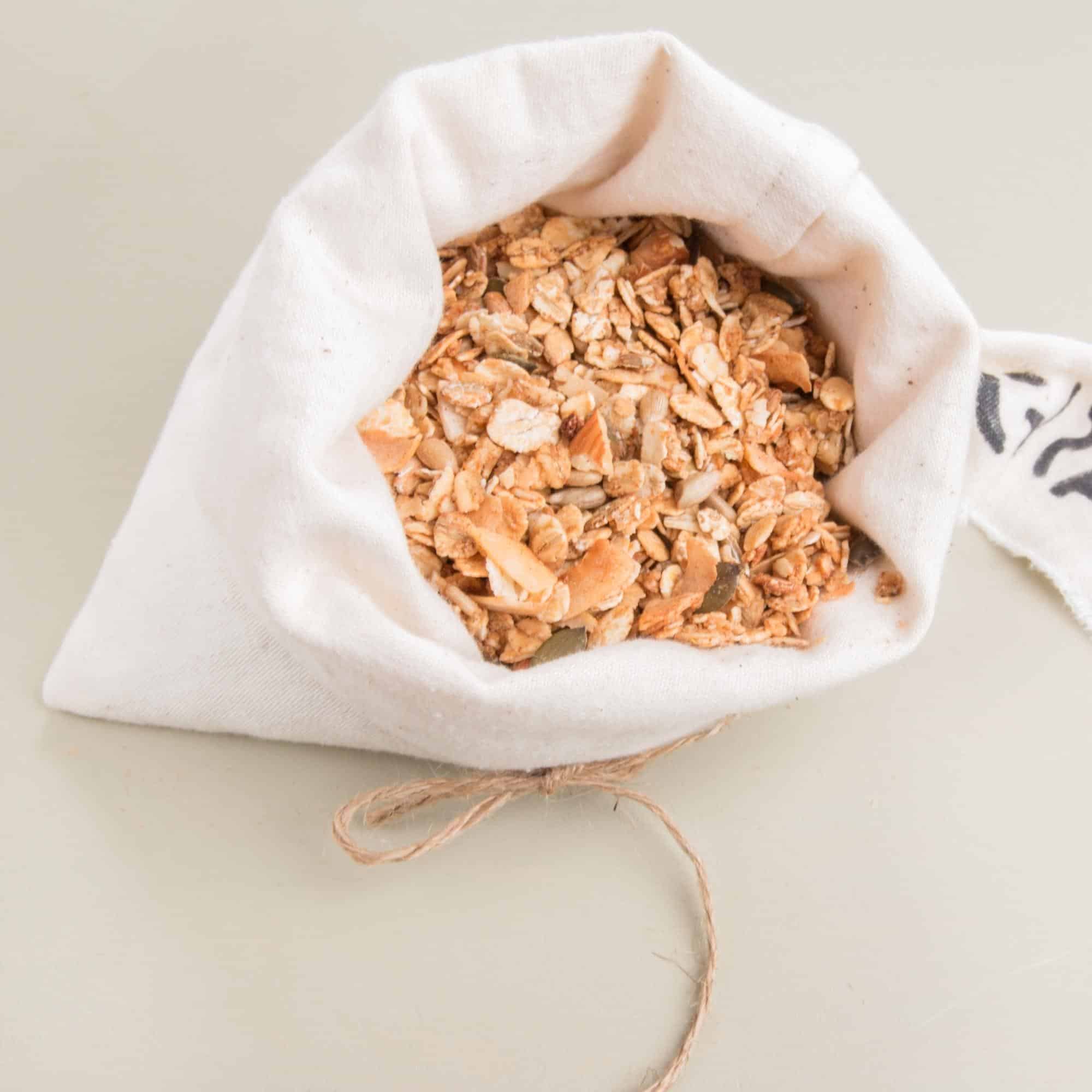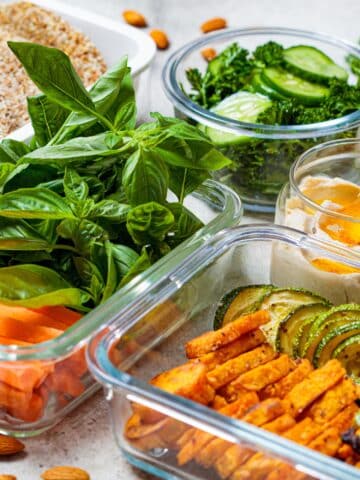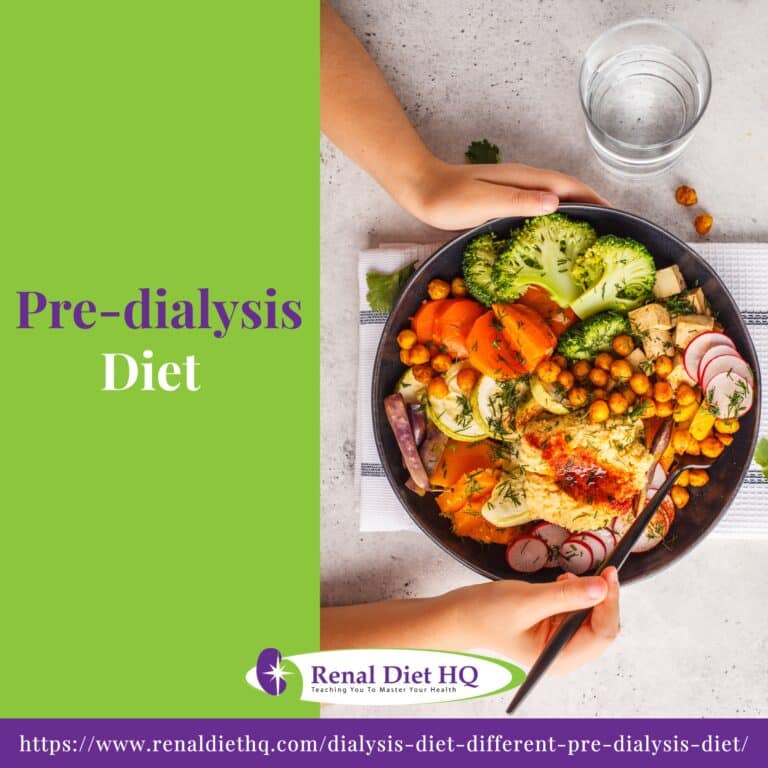Cereals Low In Potassium And Phosphorus
You've been diagnosed with chronic kidney disease (CKD), and suddenly, your diet is a major concern. You're told to limit the amounts of potassium and phosphorus, but what does that mean for your morning routine?
Living with chronic kidney disease means a lot of changes to your diet, but it does not mean you get to skip any meals, especially meals like breakfast on a kidney-friendly diet. You know what they say, breakfast is the most important meal of the day.
You will be happy to know that there are many kinds of cereal that can satisfy the requirements for being low in potassium content and phosphorus content while also being tasty and filling to help you start your day and promote good kidney health on a kidney diet. What happens if your potassium is high?
As a Registered Dietitian with over 25 years of experience in renal nutrition, I specialize in helping individuals with Chronic Kidney Disease (CKD) make informed dietary choices. My expertise is backed by evidence-based nutrition science, and I continuously stay updated with the latest CKD research and guidelines to provide accurate and practical advice. Through my work, I have helped thousands of CKD patients navigate their diet, including selecting low-potassium and low-phosphorus foods like kidney-friendly cereals, to support better kidney health.
From cold choices like Corn Pops or Apple Jacks to hot staples like Cream of Wheat, there's something for every palate. Even granola lovers have low-potassium options from brands such as Natures Path or KIND.

In this article, we'll dive deep into understanding why these dietary restrictions are crucial for people with kidney disease, how to decipher food labels correctly, and most importantly – how you can still enjoy your favorite cereals while adhering to these guidelines.
Keep reading to learn all of the delicious and healthy cereal options for you if you are looking for breakfast options with a great ingredient list for CKD patients that also have great health benefits.
Let's make breakfast enjoyable again!
Jump to:
- Key Takeaways
- The Importance of Low Potassium and Phosphorus Foods for Kidney Patients
- Understanding the Health Risks of High Potassium and Phosphorus Levels
- Cold Cereals Low in Potassium and Phosphorus: Your Options
- How To Incorporate Cold Cereals Into Your Diet
- Hot Cereals Low in Potassium: What to Choose
- Incorporating Hot Cereals In Your Diet
- The Best Low Potassium Granola Recipes For a Renal Diet
- The Nutritional Value of Low Potassium and Phosphorus Cereals
- How to Read Cereal Labels for Potassium and Phosphorus Content
- Tips For Finding And Selecting Low Potassium Cereals
- Navigating Dietary Restrictions: Enjoying Your Favorite Cereals Safely
- FAQ for Cereals Low In Potassium And Phosphorus
- Enjoy Low Potassium and Phosphorus Cereals With Your Renal Diet
Key Takeaways
- Chronic kidney disease (CKD) in the later stages like Stages 4 + 5, may require a low-potassium and low-phosphorus diet.
- Reading nutrition labels and consulting healthcare providers or nutritionists specializing in renal diets can help find healthy foods.
- Brands like Corn Pops, Apple Jacks, Nature's Path, and KIND offer low-potassium and low-phosphorus options.
- Low potassium and phosphorus cereals help manage potassium intake and reduce the risk of long-term complications associated with CKD.
For More Recipes and Ideas --->> Get Your Free Meals and Recipes That Are Perfect for Pre-Dialysis Diets, Pre-Dialysis with Diabetes, or Dialysis Diets.
The Importance of Low Potassium and Phosphorus Foods for Kidney Patients
Chronic kidney disease patients need to eat low potassium and phosphorus foods (is corn high in potassium?) because the damaged kidneys cannot clean out potassium and phosphorus as well as they could before.
The inability to get rid of the excess of these minerals of concern leads to a buildup in the body which can lead to a multitude of health risks.
An imbalance in phosphorus can be a huge concern for people with kidney disease, as it can lead to bone disease and calcium deposits in blood vessels. On the other hand, excess potassium can also cause dangerous problems like heart rhythm problems and heart attacks.
Managing your diet plays a crucial role in controlling kidney disease. It's not just about what you avoid though; it's also about what you include. This is why it's essential to incorporate foods low in potassium and phosphorus that are also nutritious like certain cereals. These can provide necessary fiber without the added risk of nutrient overload that can lead to serious health complications.
Tips for finding suitable foods include reading nutrition labels carefully and consulting your healthcare provider or a dietitian who specializes in renal diets. Also, consider trying brands like Corn Pops or Nature's Path that are known for their low-potassium and low-phosphorus options.
Remember, while managing a chronic condition like kidney disease may require dietary adjustments, it doesn't mean compromising on taste or variety. Your breakfast bowl can still be flavorful and enjoyable with the right choice of cereal.

Understanding the Health Risks of High Potassium and Phosphorus Levels
Imagine the strain on your kidneys when they're constantly battling high blood levels of these minerals; it's a risk you don't want to take.
The relationship between kidney disease and high blood potassium levels is direct - An increased amount of potassium in the body can lead to many symptoms, including weakness, numbness, nausea, chest pain, breathing issues, and heart health issues.
Similarly, an increase in the amounts of phosphorus in the body can lead to symptoms such as muscle cramps, itchy skin, and can interfere with bone and joint health.
Understand that these health risks aren't abstract threats:
- High levels of potassium might disrupt your heart's ability to function properly.
- Too much phosphorus could weaken your bones over time.
- Implementing strategies for managing mineral levels can prevent CKD complications.
- Your diet plays a critical role in controlling these nutrient levels.
By choosing cereals low in potassium and phosphorus, you're taking a proactive step towards better health.
Remember, it's not just about controlling kidney disease symptoms; it's also about enhancing overall well-being by balancing those crucial nutrients through smart dietary choices.
Make every bite count!
Cold Cereals Low in Potassium and Phosphorus: Your Options
Corn Pops
A Kellogg brand cereal which you surely see every trip you take down the cereal aisle at your local grocery store, Corn Pops are actually an option that is low in sodium, potassium, and dietary phosphorus intake.
This is a tasty and simple sweet corn cereal, and it only has 26 milligrams of potassium, 120 milligrams of sodium, and 10 milligrams of phosphorus. This is a great option for those who do not want any fruity flavors but still enjoy a sweeter cereal
Frosted Mini-Wheats
Kellogg Frosted Mini-Wheats are the most popular form of shredded wheat cereal and they are packed with healthy fiber as well as being lower in potassium, sodium, and phosphorus. While not as low in potassium as our previous choice, these still have a low amount at about 170 milligrams of potassium per serving. There are 5 milligrams of sodium and about 150 milligrams of phosphorus.
Froot Loops
Froot Loops are a classic fruity cereal option that may remind you of childhood, but if these are the types of breakfast flavors you enjoy, you will be happy to know that this is a low potassium and low phosphorus option you can enjoy on a CKD diet.
While this option does have a higher amount of sodium with 150 milligrams per cup serving, it does have the benefit of having only 34 milligrams of phosphorus and 36 milligrams of potassium.
Apple Jacks
Apples may be a great fruit for those on CKD diets, but the tasty cinnamon-apple cereal, Apple Jacks, is also safe to eat if you have CKD. This is an interesting combination of slightly fruity apple and cinnamon flavors.
This is an excellent cereal for kidney patients and can be enjoyed guilt-free because it is low in potassium and phosphorus. It has only 36 milligrams of potassium and 37.5 milligrams of phosphorus. In addition to these pros, it also has a fairly low sodium content with 142 milligrams per serving.

How To Incorporate Cold Cereals Into Your Diet
Diving into the world of breakfast options, it's heartening to know that there are plenty of choices that not only taste great, but also align with your dietary needs. For children specifically, cereals like Apple Jacks and Fruit Loops can be a fun yet healthy option as they're among the best tasting low potassium and phosphorus cereals.
Now, if you fancy getting creative in the kitchen, consider incorporating these cereals into recipes. A sprinkle of Apple Jacks can add a sweet twist to muffins or pancakes. Exploring alternative grain options is another way to ensure variety in your diet; Thrive Market Granola uses unique grains for its low potassium cereal options.
Comparing nutritional profiles between brands is essential for informed decisions. But within brands offering multiple cereal options like Nature's Path and KIND granola, nutritional content may vary significantly across different products so always check labels carefully!
Remember, breakfast should never feel restrictive, just discover what works for you while enjoying every bite!
Hot Cereals Low in Potassium: What to Choose
Bob’s Red Mill Creamy Wheat
Bob’s Red Mill is a great company with many organic and gluten-free options. They also have a great organic hot cereal option, Bob's Red Mill Organic Creamy Wheat Hot Cereal, which is low in sodium and potassium. Made with organic wheat, it only contains 38 milligrams of potassium and zero sodium. It is a great and easy to cook option that you can add many additional ingredients like fresh fruit to.
Cream of Wheat
If you are looking for hot cereals low in potassium and phosphorus, then Cream of Wheat will fit your exact needs. Certified Kosher and fat free, this option is also made with wheat but does contain more sodium than our previous option.
At about 100 milligrams of sodium, it isn’t too crazy and it only has 30 milligrams of potassium. A quick and affordable option that is readily available at many local grocery stores, this is a great attainable hot cereal that you can enjoy with CKD.
Cream of Rice
Much like the last option, there is a brand and product called Cream of Rice. It is a hot cereal that is gluten-free, fat-free, Kosher-certified, cholesterol-free, and a great addition to a healthy diet. It is also low in potassium and phosphorus. It contains zero sodium and only 30 milligrams of potassium.
When it's chilly outside or you're craving something warm and comforting, hot breakfast options can be a haven of delight for individuals managing their kidney health. Hot cereal alternatives are an excellent choice since many fall under the category of low potassium grains, making them kidney-friendly breakfasts.
Incorporating Hot Cereals In Your Diet
A top selection when it comes to hot cereals is Cream of Rice, which isn't just delicious but also lower in potassium and phosphorus compared to most other hot cereals. Cream of Wheat is another popular low-potassium option that can be jazzed up with spices like cinnamon, nutmeg, or sweeteners such as honey. For those who prefer rice-based dishes, consider trying Cream of Rice.
For individuals on a gluten-free diet, Bob's Red Mill Creamy Wheat is an excellent choice. It provides all the benefits of being low in potassium and phosphorus without compromising on flavor or texture.
You can also get creative with your hot cereal recipes by adding CKD-friendly toppings like berries or chopped nuts. Not only will this add some extra flavor and texture to your meal, but it can also provide additional nutritional benefits.
The benefits of hot cereals extend beyond their taste and versatility; they're also heart-healthy due to their high fiber content. Plus, they provide sustained energy throughout the morning because they digest slowly. So go ahead and give these kidney-friendly hot cereals a try - your tastebuds and kidneys will thank you!
The Best Low Potassium Granola Recipes For a Renal Diet
Nature’s Path
Nature’s Path has a honey almond flavor that is low in potassium, sodium, and phosphorus. It is made with gluten-free oats, honey, and almonds. It is a simple and tasty option for those who need gluten-free options as well as those on a renal diet. It has about 90 milligrams of potassium and 65 milligrams of sodium
KIND granola
KIND is a popular brand that makes various forms of healthy grain bars, cereals, and granola clusters. KIND Healthy Grains Oats & Honey Clusters with Toasted Coconut is a low potassium granola and can be a great option for people with kidney disease. It's gluten-free, Kosher, and has no GMOs. It only contains 4% of the daily value for potassium and 55 milligrams of sodium.
Thrive Market Granola
Thrive Market has a delicious and healthy granola option that is grain-free. Organic Granola, Vanilla Cinna-Yum has a few more flavors than our other options and is low potassium, low phosphorus, low sodium, gluten-free, vegan, and dairy-free. It has only 55 milligrams of sodium and about 75 milligrams of potassium.
The Nutritional Value of Low Potassium and Phosphorus Cereals
You might be wondering, "What's the big deal with these breakfast options?" Well, let me explain. Although these cereals are low in potassium and phosphorus; they can still be excellent food sources of carbohydrates, fiber, and some vitamins and minerals.
Firstly, low potassium and phosphorus cereals are a good source of carbohydrates. Carbohydrates are the primary source of energy for the body, and they play an important role in maintaining blood glucose levels.
A cereal can be classified as 'low' in terms of its potassium content if it contains less than 200 milligrams (mg) per serving. This means that when consuming one serving - typically one cup or 34 grams (g) – there will not be an excessive amount of this nutrient present in it.
The good news is that these cereals still provide plenty of nutrition while keeping your intake within safe limits. Many brands offer products with added vitamins like B-12 and iron which have been proven beneficial for kidney patients.
Plus, they often come in delicious flavors such as chocolate and cinnamon so you won't have to sacrifice taste either!
With these types of options available, people who need to monitor their potassium intakes don’t have to limit themselves from enjoying flavorful breakfast meals every day.
Low potassium and phosphorus cereals are typically made with alternative grains such as rice, corn, or wheat, which may be naturally low in potassium and phosphorus. These grains can provide complex carbohydrates that are slowly digested and absorbed by the body, providing a steady supply of energy throughout the day.
Secondly, low potassium and phosphorus cereals are a good source of fiber. Fiber is a type of carbohydrate that is not digested by the body. Instead, it passes through the digestive system, providing a range of health benefits.
Fiber can help regulate bowel movements, reduce cholesterol levels, reduce blood pressure, and promote feelings of fullness, which can help with weight management. Low potassium and phosphorus cereals are often made with whole grains, which are a good source of fiber.
Thirdly, low potassium and phosphorus cereals may still contain some of the nutrients found in regular cereals. This can include B vitamins, iron, and zinc. B vitamins play a vital role in energy production and the functioning of the nervous system.
Iron is important for the production of red blood cells, which carry oxygen throughout the body. Zinc is essential for cell growth and repair, and it also plays a role in the immune system.
Another reason why low potassium and phosphorus cereals are great is that they can help individuals with CKD or end-stage renal disease (ESRD) manage their condition. These individuals need to limit their daily intake of potassium and phosphorus, as high levels of these minerals can cause complications such as muscle weakness, bone disease, and heart disease.
By choosing low potassium and phosphorus cereals, individuals with kidney disease can help manage their mineral intake and reduce their risk of complications.
Remember, while these cereals are beneficial, it's essential to stick to recommended serving sizes and balance them with other food groups. It is important to note that while cereals with low content of potassium and phosphorus may be beneficial for individuals with certain health conditions, they may not be necessary or appropriate for everyone. It is always best to consult with a registered kidney dietitian to determine the best meal plan for your individual needs (meal planning for families with CKD).
How to Read Cereal Labels for Potassium and Phosphorus Content
Navigating the grocery store aisles might seem like a daunting task, but rest assured, it's simpler than you think to pinpoint which products align with your dietary needs by learning how to read nutrition facts labels for potassium and phosphorus content. This skill is essential when deciding how to choose cereal brands for a kidney-friendly diet (Renal Dietitian: Kidney Nutrition Experts Know About CKD).
Look at the nutrition facts panel on each box. Potassium and phosphorus are usually listed towards the bottom. Opt for cereals with less than 200mg per serving of each nutrient. Also, consider alternatives to high potassium cereal ingredients such as bananas and nuts—these could be swapped out for lower potassium fruits like apples or berries.
You should also look out for any phosphorus additives in the ingredients list like trisodium phosphate or any ingredient with “PHOS” in its name.
A meal plan with low potassium and phosphorus cereals can be fun! Explore creative recipes using these cereals such as muffins. These can make for excellent meals that not only add variety to your diet but also ensure you're consuming safe levels of these minerals.
Remember, tips for reducing potassium and phosphorus in cereals aren't just about restriction; they're about making intelligent substitutions that benefit your health without compromising taste. So next time you hit the grocery store, feel empowered knowing exactly what to look for!
Tips For Finding And Selecting Low Potassium Cereals
Now that you know how to read nutrition labels on cereal packages, it's time to explore the wonderful world of low-potassium cereals.
It can be daunting to find a healthy breakfast option that meets your dietary needs, but there are many options available for those looking for ways to reduce their potassium intake.
From traditional brands like Cheerios and Rice Krispies to specialty varieties with unique flavors such as quinoa and chia seed, there is something for everyone in this nutrient-packed category.
Finding a low-potassium cereal brand isn't difficult either; simply look at the Nutrition Facts panel on the package or research online.
For example, most oatmeal contain fewer than 100 milligrams of potassium per serving while some granolas may have up to 500 mgs - so reading labels carefully is important!
- Frosted Mini Wheats
- Apple Jacks
- Kashi Honey Sunshine
- Kashi Blueberry Clusters
- Rice Chex
- Cream of Wheat, made with water
- Cream of Rice, made with water
- Cornflakes
- Special K Original
- Corn Chex
- Honeycomb
- Honey Roasted Honey Bunches of Oats
- Old Fashioned Oatmeal
- Kashi Autumn Wheat
- Shredded Wheat
- Bran Flakes
- Kashi Strawberry Fields
- Quaker Brown Sugar Oatmeal Squares
- Special K Vanilla & Almond
- Kix
So there you have it: 20 great options that offer big flavor while keeping things low in terms of potassium content.
Additionally, you can consult reputable resources such as the National Kidney Foundation American Diabetes Association website which offers a comprehensive list of low-potassium cereal brands and recipes.
Now all that's left is to pick up a box (or two!) so you can enjoy these delicious cereals at home or on the go!
Navigating Dietary Restrictions: Enjoying Your Favorite Cereals Safely
Despite having to watch your diet closely due to kidney disease, rest assured that it's still possible to indulge in those beloved breakfast classics safely and with pleasure. Here are a few pointers for navigating dietary restrictions while still enjoying your favorite cereals:
- Creative cereal alternatives for kidney patients: Consider hot cereals like Bob's Red Mill Creamy Wheat or cold options like Corn Pops, which are low in potassium and phosphorus.
- Incorporating low potassium cereals into a balanced diet: Pair your cereal with fruits low in potassium such as apples and berries.
- Tips for finding low phosphorus cereals at the grocery store: Check labels carefully.
- Exploring the benefits of grain-free cereals for kidney disease patients: Grain-free options like Thrive Market Granola can be a good choice for people following a kidney diet, as they're naturally lower in both minerals.
Identifying delicious and nutritious low potassium cereals for breakfast is key to managing your condition without sacrificing taste or enjoyment from food. Remember, moderation is always important even when consuming these healthier choices; enjoy each spoonful knowing you're making wise decisions to keep your kidneys healthy!
FAQ for Cereals Low In Potassium And Phosphorus
Besides avoiding high potassium and phosphorus foods, you should also limit dairy alternatives high in these minerals. Avoiding excess sodium intake is also key in your diet. Be mindful of cooking methods, as certain techniques can increase these unwanted nutrients (kitchen tools and equipment).
Hydration is crucial, but monitor your fluid intake with a healthcare professional's guidance. Careful meal planning helps manage nutrient levels and prevent complications associated with chronic kidney disease. Remember, managing CKD isn't just about what you eat but how you prepare it too.
You can manage CKD symptoms by incorporating kidney-friendly fruits, such as berries and apples, into your breakfast. Opt for alternative dietary sources of protein like egg whites or tofu. Avoid egg yolks as they have high phosphorus content compared to egg whites.
Try milk substitutes like almond milk, coconut milk, rice milk, cashew milk, or flax milk in your meals. These options may help you lower your phosphorus intake.
However, be sure that they don't have any phosphate additives in them. Some milk substitutes like almond milk and cashew milk can also have high oxalate content and may be restricted if you have a history of calcium oxalate kidney stones, so it's necessary to consult your kidney dietitian.
Kidney-friendly meal planning strategies are key to ensure a balanced, low-potassium diet. Remember, managing your kidney disease isn't just about restriction but making tasty alternatives work for you. Stay informed on food choices and make breakfast enjoyable again!
Eating a healthy, balanced diet is important for everyone's well-being. When it comes to managing chronic illnesses such as chronic kidney disease and diabetes, people must pay special attention to what they are eating and how often.
This brings us to the question: Is it safe to eat low potassium cereals every day?
When we look at why this might be an issue, the answer lies in understanding the importance of regulating certain nutrients like potassium and sodium. Low potassium cereals can provide essential vitamins and minerals without overloading on these two components.
However, if eaten too frequently, one might not get enough protein or other nutrients from their meal plan which could lead to deficiencies in the long run.
That said, depending on individual health needs and dietary preferences it may be possible to safely consume low potassium cereals every day with some adjustments. For instance, adding various toppings like nuts or fruits can help boost overall nutrient content and make meals more enjoyable.
Additionally, many brands offer fortified options that contain added nutrients like protein and iron - making them even healthier choices for daily consumption.
By being mindful about portion sizes and diversifying food sources throughout the week, individuals looking to manage diabetes or hypertension can still enjoy the convenience of low potassium cereal while meeting their nutritional needs.
Being diagnosed with diabetes can be an overwhelming experience, but there are many dietary changes that people with this condition must make.
One of the most important considerations is how to get enough nutrients without consuming too much sugar or salt. Here are a few reasons low potassium cereal brands might be good for diabetic patients:
1. They are typically lower in added sugars.
2. The fiber in cereals can help regulate blood sugar levels by slowing down the absorption of glucose into the bloodstream.
3. Convenient and easy to prepare: Cereals are a quick and easy breakfast option that can be prepared in minutes, making them a convenient choice for busy mornings.
If you’re diabetic, it's worth considering low potassium brands as part of your breakfast routine. Not only do they provide balanced nutrition, but their lower sodium content helps regulate fluid balance and prevents potential side effects like high blood pressure or heart problems associated with excessive amounts of sodium consumption over time.
Additionally, these foods can help stabilize energy levels t
Enjoy Low Potassium and Phosphorus Cereals With Your Renal Diet
Navigating a low potassium and phosphorus diet can be challenging, especially for CKD patients. However, you don't have to miss out on your favorite breakfast cereals.
Cereals provide a good source of carbohydrates, fiber, and vitamins, but can sometimes be too high in their potassium and phosphorus contents. Options like Corn Pops, Kellogg Mini-Wheats, and Cream of Wheat (overnight cream of wheat) offer flavor without the risk.
Remember to always check labels for nutritional content. With careful planning and smart choices, you can enjoy a delicious breakfast that's also kidney-friendly.















I am surprised to read that Apple Jackson, fruit loops and sugar shredded wheat are good for anyone much less those of us w CKD.